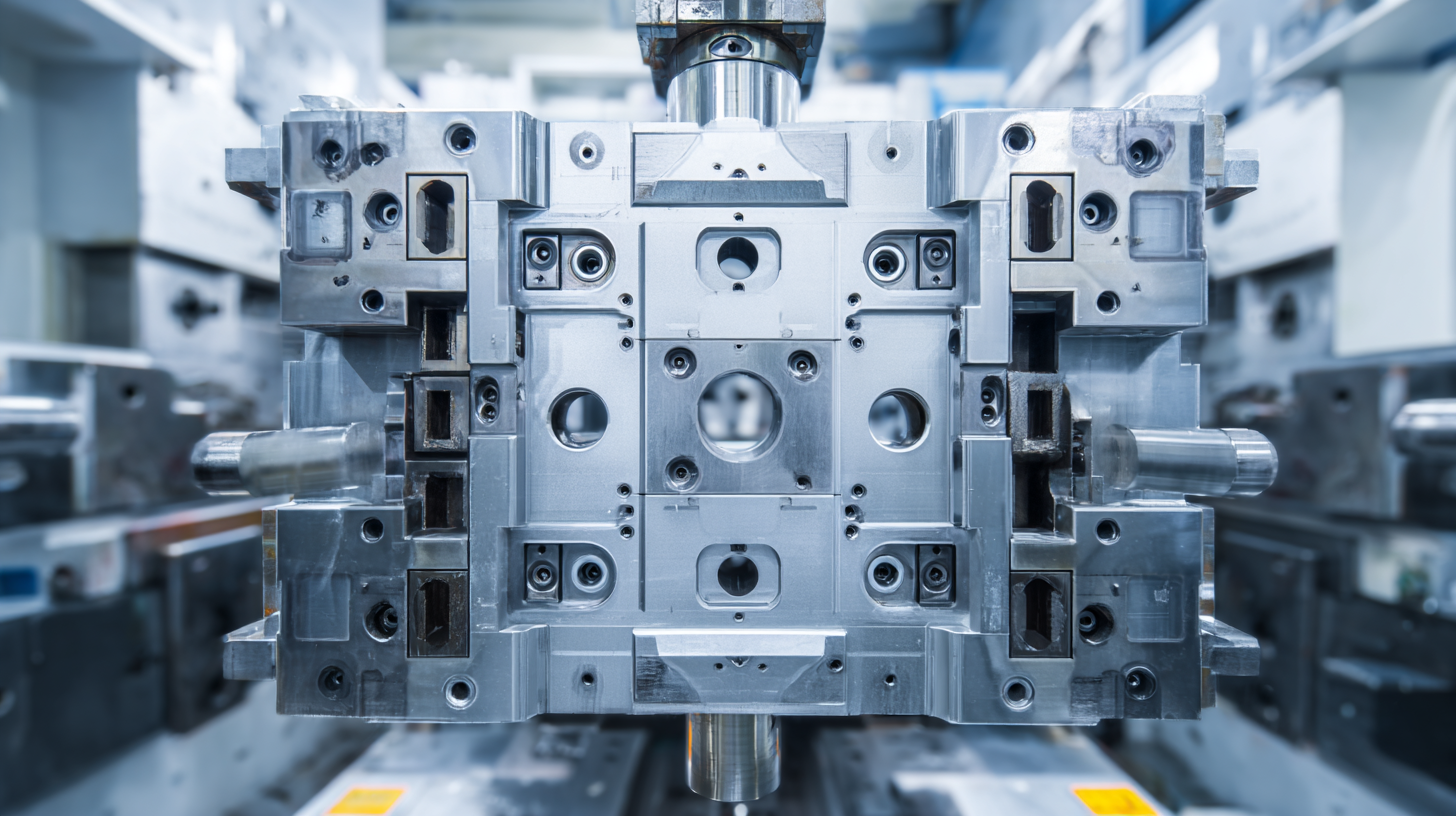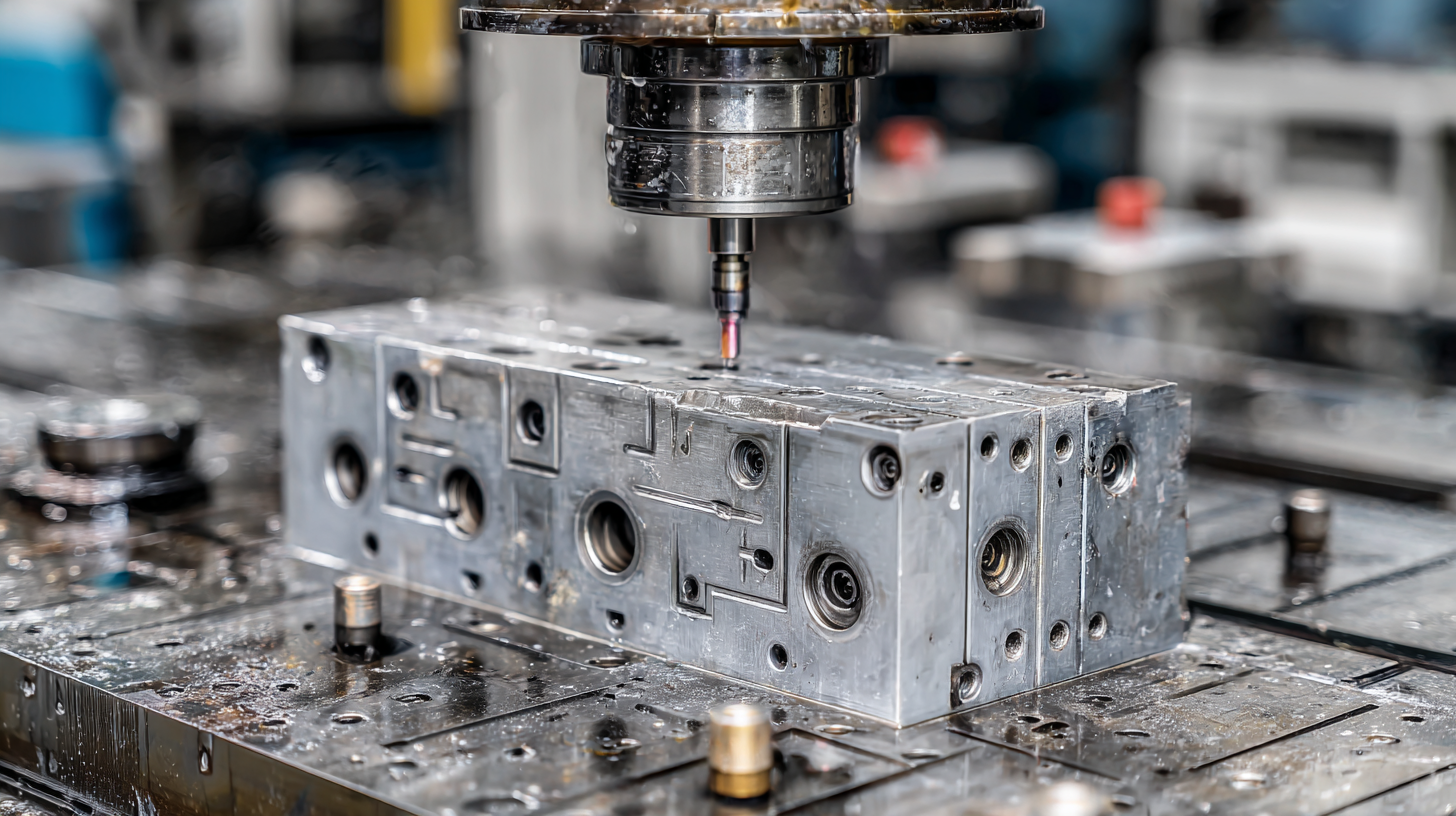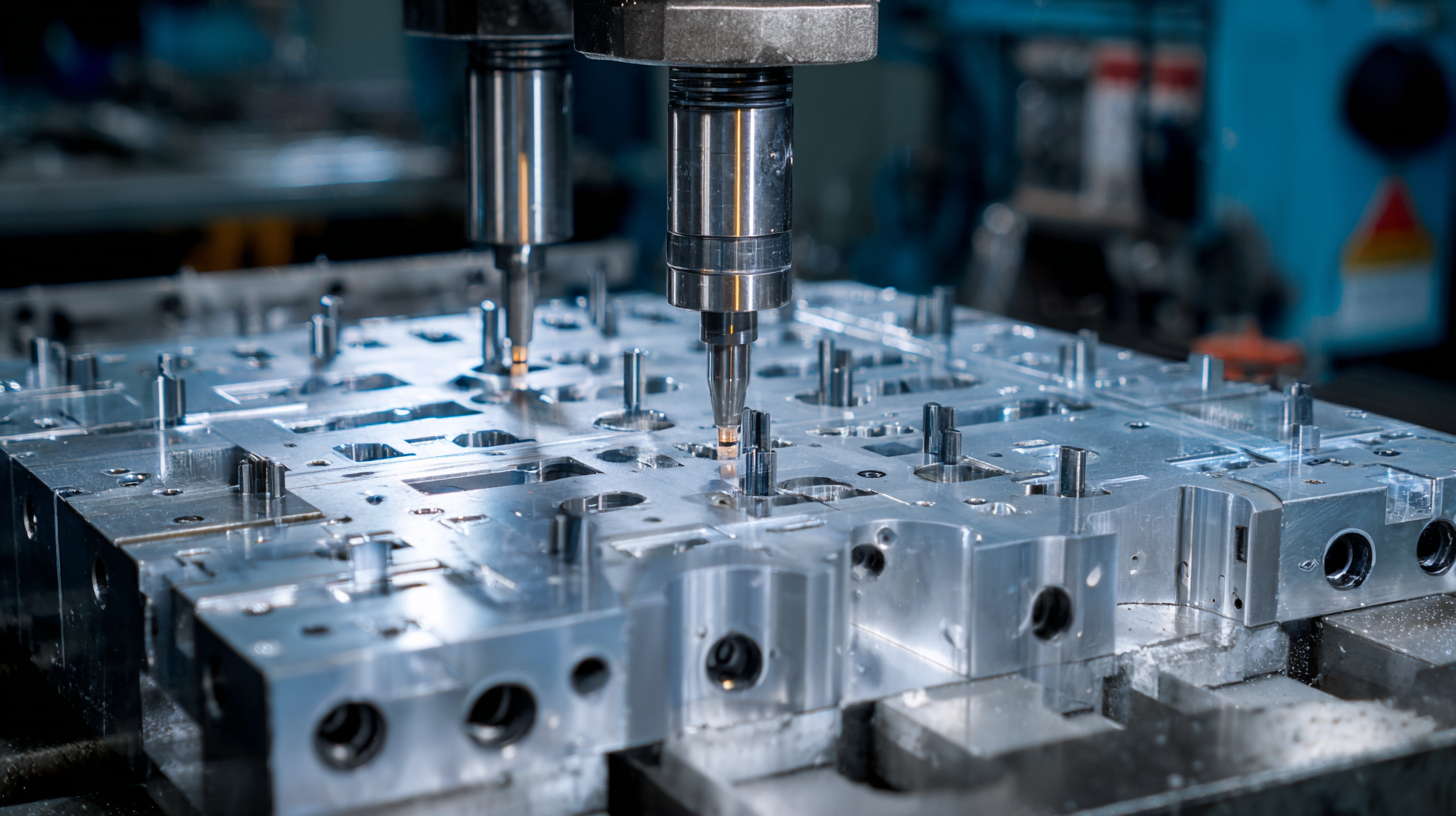
In today's fast-paced manufacturing landscape, efficiency and precision are paramount, making the choice of an optimal injection molding mold critical to success. According to a report by MarketsandMarkets, the global injection molding market is projected to reach $345.3 billion by 2025, highlighting the substantial impact of advanced molding technologies on production capabilities. The right injection molding mold not only streamlines the manufacturing process but also minimizes waste and enhances product quality, significantly affecting the bottom line. As companies increasingly focus on sustainable practices, leveraging high-quality molds becomes essential in meeting both operational efficiency and environmental standards. In this blog, we will explore the top ten reasons why investing in the best injection molding mold can profoundly transform your manufacturing efficiency, paving the way for innovation and competitive advantage in an ever-evolving market.

High-quality injection molding molds are crucial for streamlining production processes in the manufacturing sector. One of the primary benefits is enhanced precision in the final products. Superior molds are designed with meticulous attention to detail, which translates into tighter tolerances and reduced defects. As a result, manufacturers can achieve higher quality parts with less rework, significantly cutting down on production time and costs.
Additionally, high-quality molds contribute to increased durability and longevity. Investing in well-constructed molds means that they can withstand repeated use without compromising their integrity. This durability minimizes downtime due to maintenance or replacements, allowing manufacturers to maintain a steady production pace. Moreover, efficient molds facilitate faster cycle times, optimizing the overall production workflow and enabling companies to meet rising demand without sacrificing quality.

Precision molds play a crucial role in enhancing product consistency and quality control within the injection molding industry. According to a report by Grand View Research, the global injection molding market size is expected to reach USD 251.49 billion by 2025, emphasizing the significant impact that high-quality molds have on manufacturing efficiency. Precision molds are engineered to ensure that each product produced meets stringent design specifications, leading to reduced scrap rates and less rework. A study from the Society of Plastics Engineers indicates that utilizing precision molds can decrease cycle times by up to 30%, allowing manufacturers to increase output without compromising quality.
Moreover, the consistency achieved through precision molding directly correlates with customer satisfaction and brand loyalty. A report by MarketWatch highlights that 73% of consumers are willing to pay more for products that are consistent in quality. High-quality molds reduce variations in product dimensions and surface finishes, ensuring that each item meets or exceeds customer expectations. This level of quality control not only enhances product reliability but also strengthens the reputation of manufacturers in a competitive market, ultimately driving sales and profitability.
| Reason | Impact on Manufacturing Efficiency | Improvement in Product Quality | Consistency Level | Cost-Effectiveness |
|---|---|---|---|---|
| 1. Increased Precision | Reduces scrap rate by 15% | Higher dimensional accuracy | 95% consistency | Lower rework costs |
| 2. Better Material Utilization | Reduces waste by 10% | Improved mechanical properties | High consistency across batches | More sustainable costs |
| 3. Enhanced Cycle Times | Cycle time reduced by 20% | More products per hour | Improved batch consistency | Increased profitability |
| 4. Lower Maintenance Requirements | Reduced downtime by 25% | Fewer defects due to wear | High reliability | Longer mold life |
| 5. Flexibility in Design | Adapts to new products easily | Increased design options | Consistent output quality | Reduced re-design costs |
| 6. Improved Thermal Management | Enhances cooling efficiency | Better surface finish | Even temperature distribution | Lower energy costs |
| 7. Advanced Automation Compatibility | Integrates with robotics easily | Consistent production quality | High throughput consistency | Increased output with lower labor costs |
| 8. Quick Turnaround Times | Faster product launches | Consistent quality assurance | Reliable production rates | Timely delivery to market |
| 9. Enhanced Durability | Long-lasting molds | Reduced product defects | Stable performance | Lowers overall production costs |
| 10. Better Quality Control Processes | Streamlined inspection processes | Improves end product standards | High-level consistency | Minimized quality issues |
Choosing the right injection molding mold is crucial for enhancing manufacturing efficiency, and one of the primary benefits lies in cost-effectiveness. By selecting high-quality molds that are tailored to specific production needs, manufacturers can significantly reduce material waste and optimize cycle times. This strategic choice not only minimizes expenses associated with excess inventory but also streamlines the overall production process, leading to a more efficient use of time and resources.

Furthermore, investing in the best molds can lead to improved product quality, which translates directly to customer satisfaction and reduced costs associated with defects. When molds are designed for durability and precision, they require less frequent maintenance and replacement, ultimately saving both time and financial resources. The initial investment in superior mold technology may appear higher, but the long-term savings and productivity gains offer a compelling reason to prioritize mold selection in injection molding operations. With the right choices, manufacturers can create a sustainable competitive advantage while maximizing their return on investment.
In the fast-paced world of manufacturing, design flexibility is paramount.
Custom injection molds allow manufacturers to tailor their production processes to meet specific demands, resulting in enhanced efficiency and lower operational costs.
According to a report by Grand View Research, the global injection molding market is projected to reach $370 billion by 2027, indicating a robust demand for customized solutions that can adapt to varied product specifications.
One of the key advantages of custom molds is their ability to accommodate diverse manufacturing needs.
For instance, industries ranging from automotive to consumer goods can benefit from molds designed for specific applications.
This adaptability not only optimizes production timelines but also minimizes waste, ultimately improving profit margins.
A study by the Society of Plastics Engineers shows that companies implementing tailored mold solutions can achieve up to a 30% reduction in cycle times.
Tip: When considering custom molds, engage with a reputable mold design partner that understands both your industry and the latest manufacturing technologies to ensure seamless integration.
Moreover, using advanced simulation software during the design phase can further enhance mold performance and reliability.
By visualizing potential issues before production, manufacturers can refine their molds for optimal outputs.
This proactive approach can lead to significant improvements in product quality and consistency.
Tip: Always prioritize regular maintenance and updates for your molds to sustain their performance and adaptability over time.
Reliable molds play a crucial role in reducing downtime in manufacturing operations. When hydraulic components fail due to issues like oil degradation—often exacerbated by elevated operating temperatures—production halts, leading to increased costs and inefficiencies. A well-designed injection molding mold can significantly mitigate such risks, ensuring that machinery operates smoothly and consistently over time. Innovations in mold technology, such as automated systems, can also help manufacturers maintain productivity by reducing the likelihood of unexpected malfunctions.
In this context, companies like Maclean Power Systems demonstrate the potential of advanced molding technologies. Surpassing one million molds in under two years reflects a commitment to efficiency and reliability. Moreover, with the introduction of AI predictive maintenance tools, manufacturers can anticipate equipment failures before they occur, boosting factory uptime by as much as 15%. This integration of reliable molds and advanced monitoring systems not only streamlines operations but also enhances overall manufacturing efficiency, forging a path toward more sustainable industrial practices.
Copyright © 2025 The Toolroom Inc. All Rights Reserved.
Website Design St Louis by IQComputing